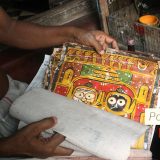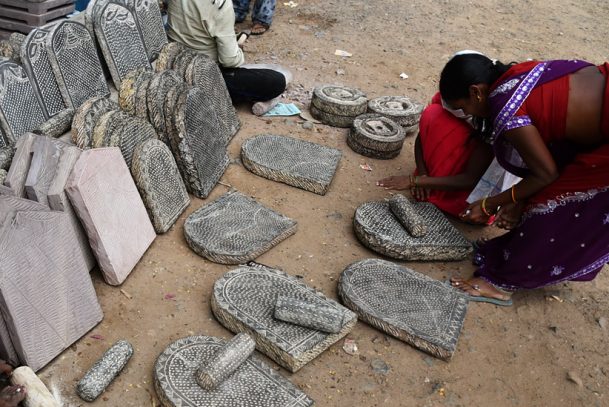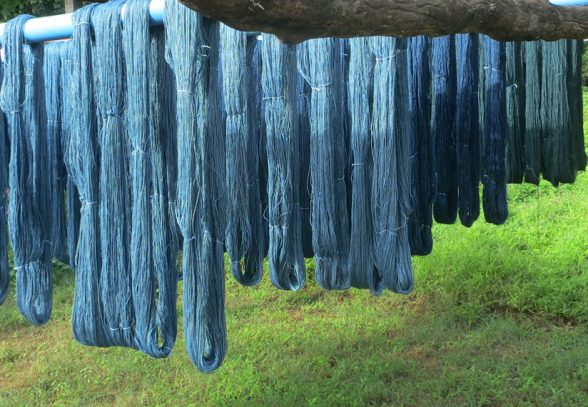Sil Batta: The Stone That Remembers
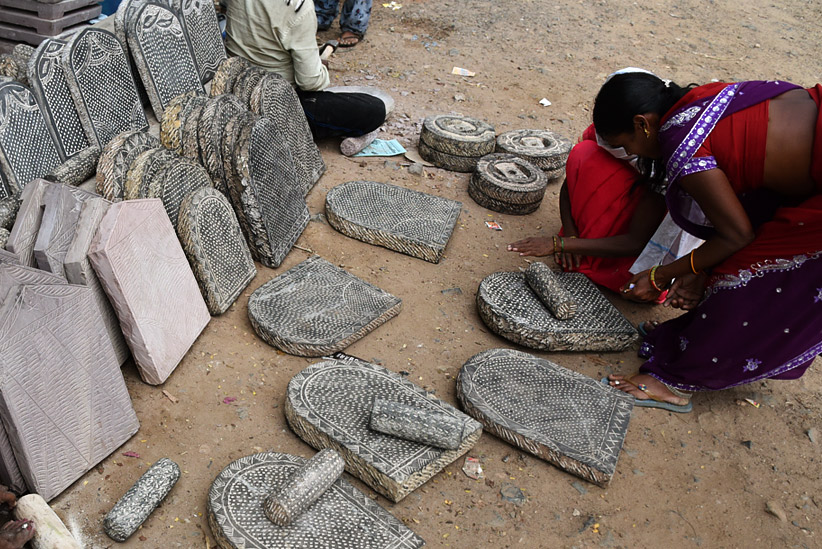
“Sil batte ki chutney hi asli chutney hoti hai,” my Nani would murmur, crouched near the kitchen window, bangles softly clinking as her hand moved with quiet authority. No garnish, no grand gestures, just the steady, knowing press of her palm over the stone as garlic, green chilli, and coriander slowly lost their edges and became something new.
I would watch, part mesmerized, part restless. To me, it looked like effort. To her, it was a ritual.
The Sil Batta wasn’t just a tool, it was rhythm. A slow, deliberate cadence not measured in electricity or speed but in memory, repetition, and care.
Before kitchens buzzed with mixers and choppers, they pulsed with the ancient sound of stone grinding against stone, a sound older than recipes, older perhaps than even language. Ask anyone whose memories are stitched with the scent of roasting spices and the clatter of steel utensils, and they’ll tell you: the Sil Batta wasn’t just seen. It was felt. It speaks, if you know how to listen. It responds to technique. A light roll invites a smooth paste, a sharp push grates the spices rougher. Over time, you learn to read its moods, the way it hums when content, or resists when misused. It’s a dialogue between hand and stone. Each masala has its pressure, each chutney its pace. It doesn’t just grind; it guides.
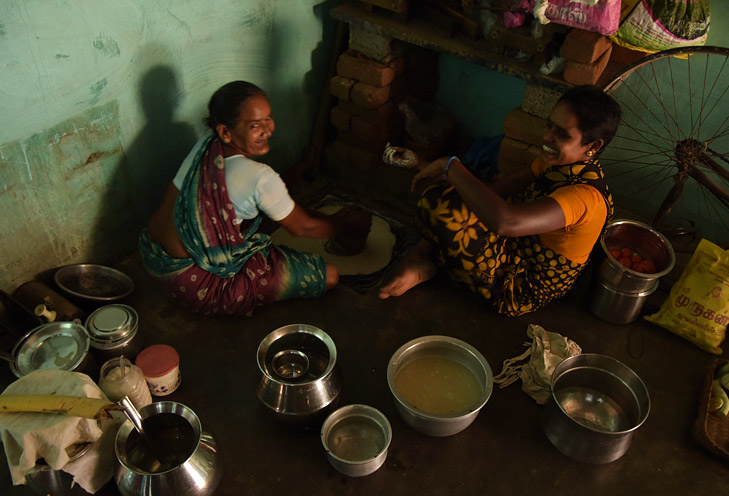
I still remember waking up to the low scrape of the Sil Batta in the kitchen. As a child, I didn’t pay much attention. It was background music, like the pressure cooker’s whistle or the temple bell at dusk. But growing up, I began noticing how her shoulders moved with strength she never flaunted, how her eyes narrowed slightly when checking the texture of the paste.
She was not just cooking. She was crafting.
The stone didn’t whirr, it responded.
I asked her once why she never used the mixer. She didn’t look up.
“Taste kar ke dekh,” she said.
And I understood.
The mixer slices. The stone persuades.
It felt… eternal. Like the kitchen floor, or the old transistor perched on the shelf.
Only once did I ask where it came from. It was during a monsoon afternoon, the kind that invites stories and pakoras.
“From Rewa,” my Nani smiled, eyes glinting with a memory awakened. “Your grandfather rode back with it on his cycle. Two hours of pedalling. I use it every day.”
“Your Nana asked me questions,” she laughs, “About what kind of food I’d be making, how much my wrist could take, whether I’d want to sit or stand.” Based on her needs, and his love, he chose one carefully. They were on a trip down South, and she spotted it in a market in Tamil Nadu. “Bas usi waqt dil aa gaya tha” she chuckles. A southern sil batta with a curved batta, brought north as a souvenir of marriage and mustard seeds. This was selected, by hand, for hand, stone by stone, weight by weight, chosen for its permanence.
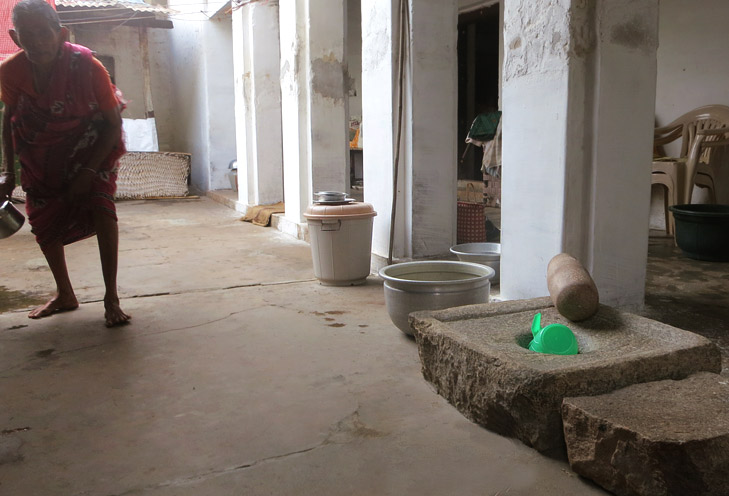
Traditionally, the sil (flat stone) and batta (cylindrical grinder) are hewn from basalt, granite, or sandstone, each stone echoing the land it came from. In Rajasthan and Madhya Pradesh, red and grey sandstone ruled. In the South, volcanic granite with a coarser touch dominated kitchens.
These weren’t mass-produced slabs. Artisans knew: too smooth, and nothing grinds; too coarse, and everything sticks. A good Sil Batta needed balance, an incline to drain liquids, the right friction, the right heft. It needed to sing when water kissed its surface.
It wasn’t bought. It was inherited. And, sometimes, initiated.
In many homes, the Sil Batta formed part of a bride’s dowry. A weighty promise. A stone inscribed with an unspoken oath: that this kitchen would now be hers to shape.
Over time, some Sil Battas would develop a slight depression at the center, worn in by repetition, memory, and care.
It was always grinding, not blending. That was the secret. But why?
Because blending is violence. A quick, impersonal shredding. Grinding, on the other hand, is persuasion. You press, smear, and coax the flavours out. Ginger softens. Cumin cracks open. Mustard releases its sharp oil. Garlic humbles itself under the rhythm of the batta.
It’s not just what goes into the chutney or masala, it’s what comes out of it. The aroma is fuller. The textures are real. The heat of a green chilli doesn’t vanish; it settles.
Turmeric root isn’t just ground; it’s honoured.
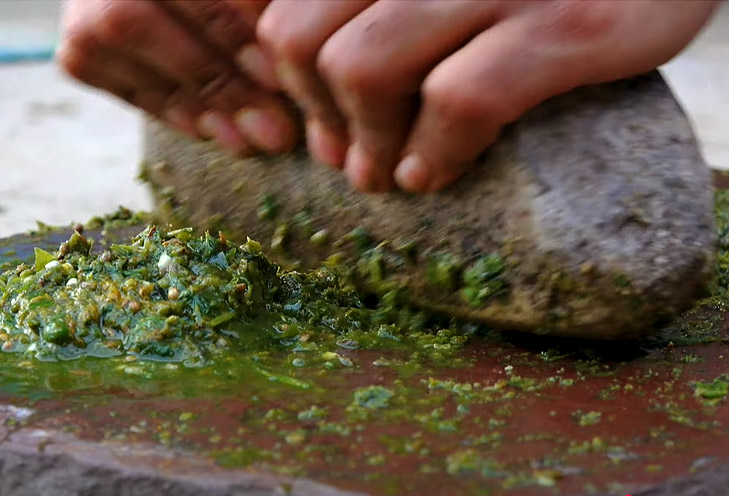
From masalas for kadhi to poppy seed paste for Bengali posto, from mint chutneys to nut-and-coconut bases in southern gravies, the sil batta has always worked like a stone memory card. Holding onto flavour. Refusing to rush.
And somehow, in that slow pressing and smearing, the ingredients become friends. They don’t just combine, they converse.
What she didn’t say out loud, but perhaps knew in her body, was that the stone held Ayurvedic wisdom too. Unlike high-speed blades that heat and oxidize, the sil batta’s slow grind preserves cooling properties and medicinal value. Herbs retain their potency. Seeds yield oils gently. My Nani’s hands, even in her seventies, remain toned and practiced, not just from labour, but from the quiet wellness of doing something right.
Though the sil batta often conjures a single image, it is a creature of many shapes and accents, each region shaping it to suit its food, posture, and rhythm.
In North India, it’s often rectangular, long enough for the batta to roll across its width. In Maharashtra, a rounded version known as pata-varvanta is common, with slightly curved surfaces. The Eastern states sometimes use a smaller sil batta for delicate spice work, especially mustard and poppy seeds. In South India, you’ll find the ammi kal, a heavier, curved version where the rolling stone is flattened and sometimes broader, designed to crush soaked dals and coconut. It sits proudly in Tamil kitchens, used for grinding masalas and idli-dosa batters.
These forms weren’t designed in factories. They evolved, born of the foods they prepared and the bodies that used them.
And they all shared one thing: weight. A sil batta didn’t move easily. It was meant to stay.
In most homes, the sil batta had its quiet corner.

Sometimes it sat in the corner of the kitchen, near the door or window, where light and water could reach it. Other times, it rested in the angan, near the tulsi plant, surrounded by morning sunlight and soft sounds of bangles.
It was never kept too far from water, but never drowned either. Washing it had its own ritual. No soap. That would ruin the stone’s seasoned surface and leave a smell. A gentle scrub with ash from the chulha, tamarind peel, or coconut husk, used tea leaves, and a splash of water. If something stuck, you used the same batta to rub it out, like a loop of self-cleansing. Nani would tilt it on its side to dry, making sure no water stayed trapped.
The sil batta had its own entourage of habits.
To pick up the ground paste, one must know the scoop. Sometimes it’s a single-finger curl, other times, a three-fingered sweep. Children learn not from instruction but imitation.
We were warned not to drag the stone—bad luck. It had to be lifted (heavy though it was), always placed with care. On certain days, especially after a death in the family, it was left untouched, as though even spices must mourn.
Some even cracked coconuts on its edge, much to Nani’s dismay. It was the press used to flatten sattu laddoos or shape modaks. On hot days, some elders even sat on the sil, claiming the stone cooled their knees and hips!
It was also, quite honestly, a weapon. Mothers could threaten with a glance toward it. And thieves avoided kitchens, they knew the sil batta wasn’t something you wanted falling on your foot.
It was useful, humorous, and sacred.
In our house, and in every house I knew, it was the women who used the Sil Batta.
I never saw my father touch it. Or my grandfather.
It was as much a symbol of womanhood as a stitching needle or a broom.
The grinding stone passed from mother to daughter, silently. Along with it came lessons in both technique and temperament.
“This is how you press the garlic.”
“This is how you know when coriander is ready.”
“This is how you feed a family without saying a word.”
And still, there was rebellion within that routine.
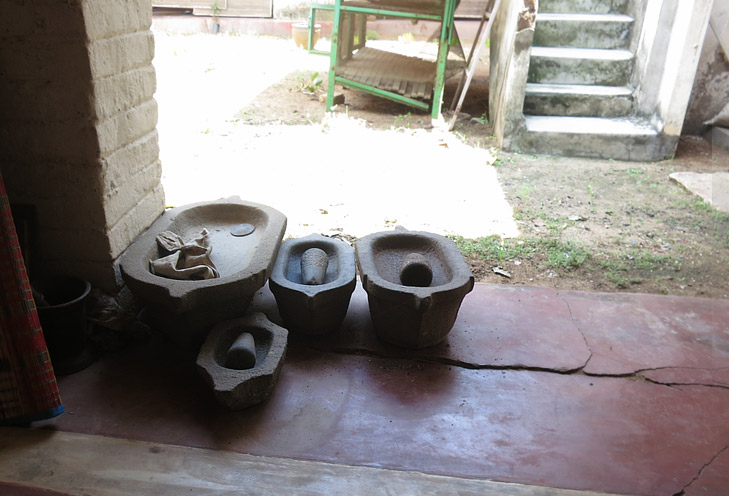
In homes where women were taught not to raise their voices, they pressed everything into that stone, garlic, green chillies, grief, frustration. They ground rage and tenderness into the same chutney and served it warm.
The Sil Batta absorbed it all, asking nothing in return.
“Zindagi ko sil batta bana ke rakh diya hai!”
I remember my aunt complaining after a long day. She wasn’t angry, just tired. And with those words, the stone transformed.
It wasn’t just a kitchen tool.
It became a metaphor.
Across India, the Sil Batta lives in idioms. In Hindi, Marathi, Tamil, Bhojpuri, wherever there’s domestic labour, the stone becomes its image.
Pees-te jao. Keep grinding. No rest. No applause.
In Urdu poetry, it’s the lover’s suffering. In folk songs, it becomes a stand-in for the woman, stoic, enduring, unacknowledged.
My grandmother once told me, “Pyaar ka bhi sil batta hota hai. Ego ko peesna padta hai uspe.”
Love has its own Sil Batta, she meant. You can’t break the ego. You have to grind it. Slowly.
Patiently.
Softening it into something that can blend.’
Because we grew up not just seeing the Sil Batta, but hearing it, feeling it, living with it.
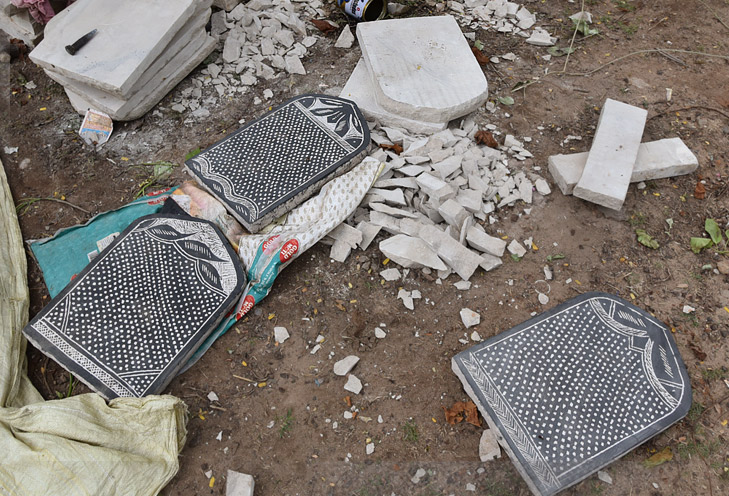
And before you think it’s gone, no, it hasn’t vanished. The sil batta still survives, not just in corners of memory but in modern kitchens too. Artisans are still carving them. Many travel to cities once a month, carrying raw slabs covered in black charcoal. They sit on pavements, chisel slowly, coaxing dents and grooves into becoming different battas. Each has a personality. Some are long and flat; others deep and heavy. Some even come with tiny feet for grip.
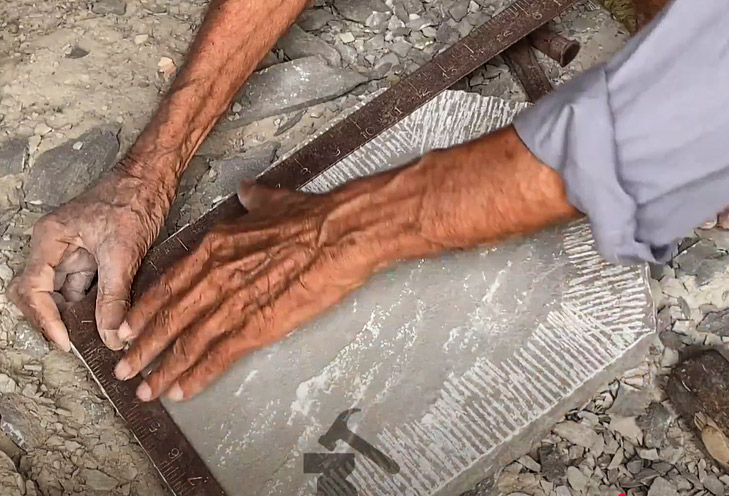
Of course, modern tiled kitchens pose a challenge. The stone slips. But some clever souls use rubber pads beneath, making space for old roots on new ground.
And it’s not just the sil batta that feels left out. The haath wali chakki sighs too, waiting for someone to return to her rhythm. These aren’t just tools. They’re memory-keepers, quiet, grounded, and patient. Still waiting.

